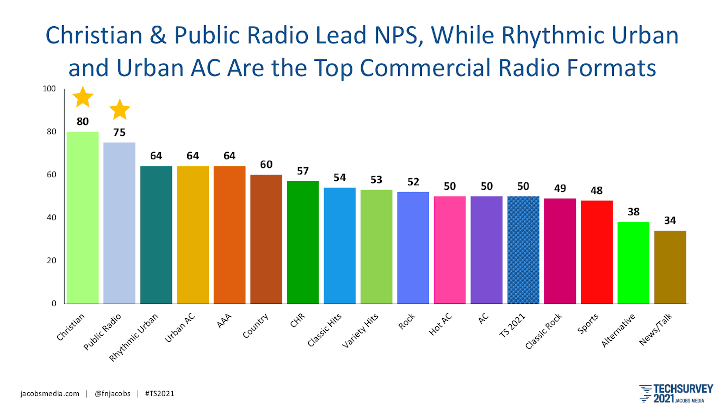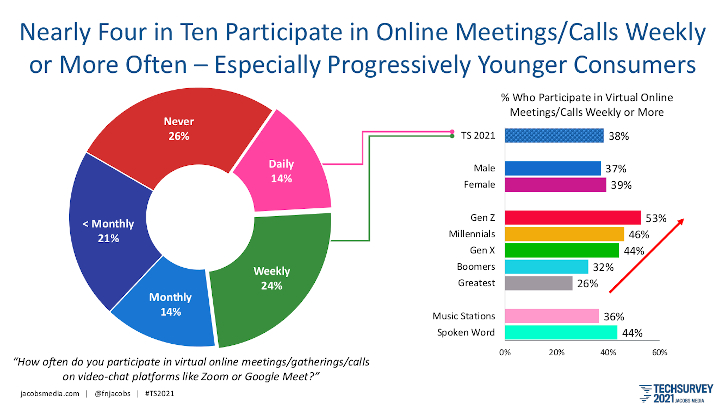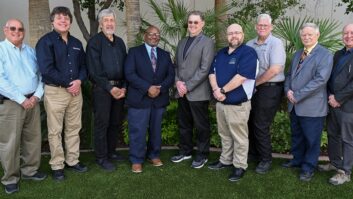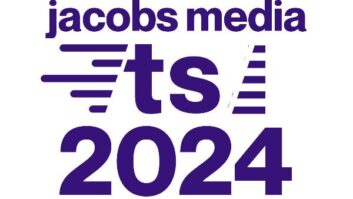The best form of advertising has always been word of mouth. TechSurvey 2021’s way of measuring this metric for radio is the Net Promoter Score (NPS). When ranked on a likelihood to recommend scale of 1 to 10, those choosing 9 or 10 are classified as promoters. Those selecting 0 to 6 are the detractors. Applying simple math, percent promoters – percent detractors = NPS.

One thing that hasn’t changed since TechSurvey began publishing NPS scores is that Christian and public radio lead the noncommercial radio pack in the number one and two places respectively. Noncommercial radio has shown steady growth over the past 17 years, hitting an all-time high of 50% in 2021. Christian now has an impressive score of 80%, while public radio is close behind with 75%.
[Read: Survey Says Full Speed Ahead for Mobile Devices and Apps]
The commercial radio part of the NPS ranking has changed from TS 2020, where rock and country were in the lead, and alternative was bringing up the rear. This year, the leaders are rhythmic urban and urban AC, with news/talk in last place. The NPS numbers for TS 2020 were largely driven by women, younger demos and music fans. No breakdown was published for TS 2021.

Online meetings have experienced explosive growth over the past year and a half, largely due to COVID, and for the first time, Jacobs Media has begun to track who is attending, and how often.
The word Zoom has become ingrained in our vocabulary, often synonymous with any type of online meeting, even though there are Google Meet, GoToMeeting, Skype and other online gathering providers.
TS 2021 numbers suggest that daily and weekly participants in online meetings are largely in younger demographics, led by 53% of Millennials, with Greatest Generation at the trailing edge with 26%.
Online meetings have had unexpected benefits for some organizations. Many had relied on in-person gatherings in the past. That tended to restrict participants to those in close driving distance, and/or those who didn’t mind rush hour traffic and parking issues in urban areas. Online meetings have leveled the playing field, giving an equal presence to everyone regardless of distance from an organization’s main office.











